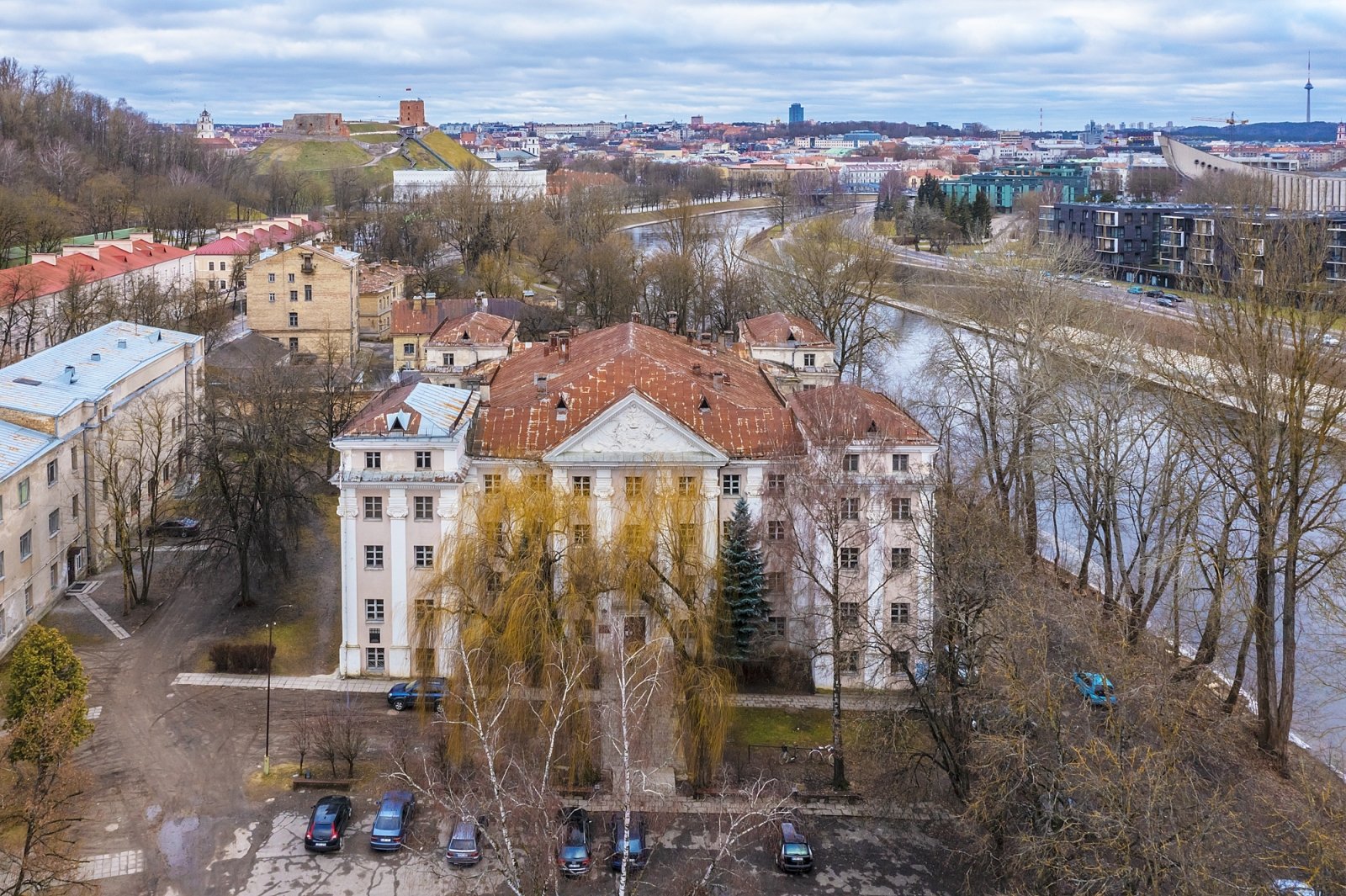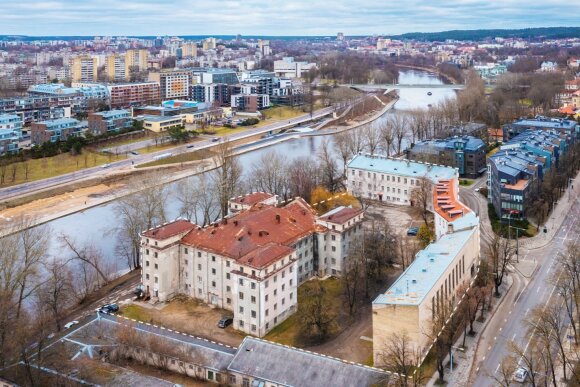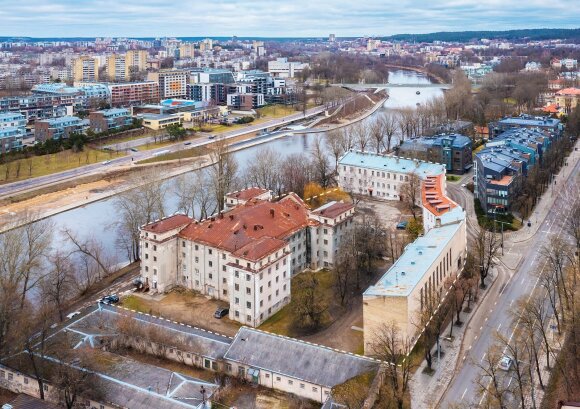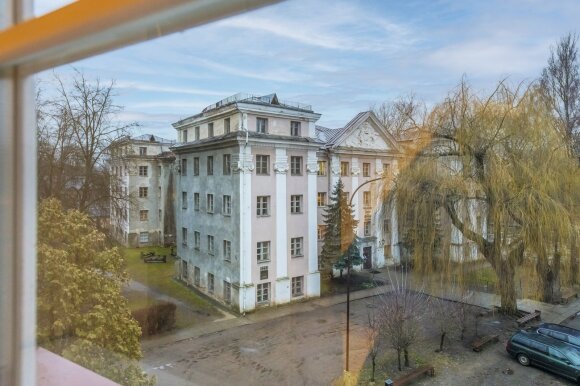Three T. Kosciuškos st. The area of the buildings of the Sluškai palace complex in 10 and 12 is over 6.6 sq. M. m. Auction price – 11 million. Eur (VAT not applicable). The auction is scheduled for April 6.
“In the central part of the city, the area of real estate suitable for development is rapidly decreasing, and objects of similar size are rarely sold in such locations. Some of the previous successful examples are the service-oriented Vilnius Central Post Office building (5.4 thousand sq. M), sold in 2020, which will house ISM University, and the Vilnius Public Infection Hospital in Žvėrynas (3.6 thousand sq. M). where it is planned to provide SPA and wellness services, and Aguonų str. The two administrative buildings of the former ESO headquarters 24 and 26 (6.5 thousand sq. M.), Where it is planned to establish a school – to be sold in 2021, ”says J. Ragaišė in a press release.
Sluškės Palace auction
© Company photo
–
Sluškės Palace, located in the very center of the capital, on the banks of the Neris River, has a wide range of applications. The infrastructure of the city is developed here, but the palace is also surrounded by nature, which adds extra beauty to the authentic object. The place is extremely attractive for both living and working.
According to J. Ragaišė, there is no need to worry about the possibilities of reconstruction and application of the object. There are many examples in the market where unique and valuable projects are created from extremely poor condition buildings. Among them are the favorite places of Vilnius residents and guests of the city: the hotel “Pacai”, the administrative “Tower” and the service and shopping complex “Senators’ Passage”.
The common strength of the Senators’ Passage, the Pacai and the Tower Square is its exceptional location and historic authentic buildings, which have been successfully renovated and adapted to the needs of modern citizens. The sales of such and similar objects are decreasing and it will be more and more difficult to acquire real estate in central locations, ”says J. Ragaišė.
Sluškės Palace auction
© Company photo
–
According to the General Plan of Vilnius, the construction of residential, public and commercial facilities is possible in the territory of Sluškai Palace. A project of prestigious apartments has already been prepared for the other buildings of the Sluškės Palace nearby (T. Kosciuškos St. 6 and 8).
It may turn out that the transformation of such an object – not for everyone, because it requires specific competencies and a lot of time. However, according to the specialist, those who want to invest in a unique project but have doubts about development opportunities can always consult real estate consulting companies, their specialists and architects, who can contribute to the transformation of the object – from refinement to construction project maintenance and implementation cost management.
Although the buildings for sale are objects of cultural heritage or are located in the territory of cultural values, their purpose is not protected. Therefore, the history of Sluškės Palace will be further developed and continued by the buyer.
History of Sluškės Palace
In this place in the 16th century. end – 1636 stood the nobility Kiškės, 1645–1690. – Paci Palace. 1691–1694 After the demolition of the old and present palaces, Dominykas Mykolas Sluška (c. 1655–1713) and his wife Konstancija Podberska built Polotsk Voivodeship.
Prior to the construction of the Sluškės Palace, the previous buildings were demolished. It was built by changing the shoreline of the Neris River, when the square was specially flooded. The land is dug from the hill that separated Vilnius city center from Antakalnis. Until 1700 m. completed construction and installation of a rectangular plan palace with four massive towers in the corners. A marble board was inscribed on the façade with the inscription: “I pushed the mountains, I calmed the whirlpools of the Neris, as the winner rose above the tops of the hills without relying on them, I became a haven of peace and the first monument of Antakalnis. When entering this palace, the guest leaves the toga of the office and his military marks – he will be soothed here by the goddess of peace and friendship of the moon of care. ”
Sluškai palace complex in Vilnius
–
The palace of Dominykas Sluška is believed to have been decorated by Italians Mykolas Archangelas Palonis and sculptor Petras Pertis. The luxurious interiors were decorated with Italian marble, wall paintings and abundant moldings. One hall had a glass ceiling, and above them was an aquarium with a variety of fish and mermaids. The palace is surrounded by a beautiful Italian-style park with canals, ponds, fountains and exotic vegetation.
18th c. The leaders of the Grand Duchy of Lithuania and Poland and other countries arriving in Vilnius lived in the palace. 1705 Tsar Peter I of Russia stayed here for several weeks.
After the death of Dominykas Sluška in 1713. the chamber went to his creditors. 1719 The palace was acquired by Potockiai in 1727–1745. they belonged to the Puzins, then again to the Potockis. 1756 the palace was bought by the Pijor monks. They carried out major repairs and set up a college for the children of the nobility and a famous printing house here. Mykolas Kazimieras Oginskis, the Grand Hetman of the Grand Duchy of Lithuania, bought the palace from the monks and installed it in his own way (architect Pietro de Rossi). After his death, it went to the composer, the treasurer of the Grand Duchy of Lithuania, one of the 1794 rebel leaders Mykolas Kleopas Oginskis. 1794 A rebel headquarters operated in the abandoned Sluškės Palace during the uprising, and a projectile foundry was set up in the area. After the uprising, the tsarist government confiscated the palace and converted it into a rented house with 22 apartments.
Sluškai palace complex in Vilnius
–
1803 The Slush Palace was bought from the tsarist authorities by a merchant from the city magistrate Dominykas Zaikovskis. The buildings were renovated and equipped with a brewery and a sawmill. 1830–1831 the building of the palace was repurchased by the tsarist government from the merchant and converted into a military fortress, which was built around Gediminas Hill. 1833 the palace was converted into a barracks, ammunition depots, in 1872, where the prison of Katorga was established. During the Tsarist Russian Empire in the 19th century. In the building there was a prison for political prisoners “Citadel no. 14 ”. He was imprisoned there in 1831. and 1863. participants in the uprisings.
As a prison in 1919–1939. The palace was also used by the Polish authorities that occupied Vilnius. The purpose of the prison was maintained by the palace until the 20th century. vid. During the Second World War and the post-war period, the prison housed prisoner-of-war camps, detainees and political prisoners.[2]. After the war, German prisoners of war were transported from the palace to the construction of the Žalgiris stadium.
1959-2002 Vilnius 2nd Polytechnic School has been operating since 2002. The building houses the Lithuanian Academy of Music and Theater.
The palace was originally two-storey, with three-storey corner towers. 19th century pab. – XX a. pr. during the reconstructions, four floors were formed instead of the former two, by demolishing the vaults and installing wooden ceilings, which were later replaced by reinforced concrete ones.
–
It is strictly forbidden to use the information published by DELFI on other websites, in the media or elsewhere, or to distribute our material in any form without consent, and if consent has been obtained, DELFI must be cited as the source.





